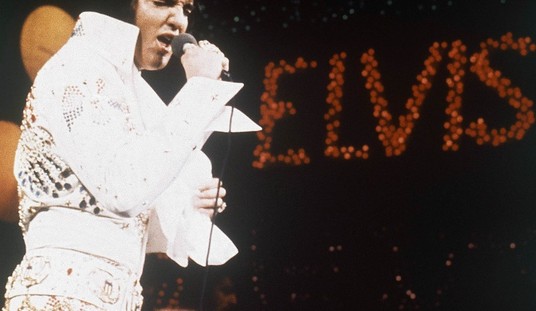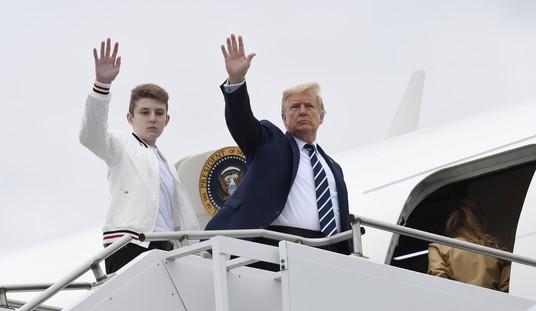In numerous interviews, J.K. Rowling has admitted to being influenced by British folklore, Shakespeare, Jane Austen, C.S. Lewis, the Bible, and even the Iliad, but never comics. The similarities between her Harry Potter novels and the X-Men as created by Stan Lee and Jack Kirby however, suggest otherwise with numerous points in common.
That said, nothing exists in a vacuum and there’s very little in pop culture that either hasn’t been thought of before or that hasn’t been built on an earlier concept. For instance, although the X-Men were created by writer Stan Lee and artist/co-plotter Jack Kirby in 1963, there’s plenty of evidence to suggest that they drew inspiration from earlier sources. Both men have acknowledged interest in science fiction in general and the pulp magazines of their youth in particular. There, science fiction writers such as A.E. van Vogt and Henry Kuttner made their reputations exploring the idea of mutants living among us.
van Vogt’s classic novel Slan, published in Astounding Science Fiction magazine in 1946, is generally credited with popularizing the concept of the mutant. In it, Slans are a mutant race hunted to near extinction by homo sapiens with a young Jommy Cross using his inborn telekinetic power to stay alive.
With the growing awareness of nuclear power in the post-war era, more stories began to be written featuring mutants including Isaac Asimov’s Foundation trilogy. Again featured in a series of stories for Astounding over the course of the late 1940s, they featured a mutant called the Mule who had the power to affect emotions.
Then there were the Baldy stories by Henry Kuttner.
Written in the mid-1940s, the Baldy stories take place in the future after a new mutant race of telepaths arise who must defend themselves against the threat of a possible pogrom by the more numerous humans. In the stories, mutants are referred to as “homo superior,” conduct an underground war between good and evil mutants, and of course, the outward symbol of their difference is being bald. All concepts that became part and parcel of Lee and Kirby’s X-Men.
Flash forward to the mid-1970s when the X-Men strip was retooled as “the all new, all different X-Men” and placed in the control of writer Chris Claremont and artist John Byrne. The mutant heroes caught on big, became a sales juggernaut, and by the end of the century had become household names.
Thus it’s not out of the question that, like Lee and Kirby’s familiarity with Asimov and Kuttner, Rowling may have been familiar with the X-Men characters, if only through one of their watered down animated versions. How else are we to explain the following too close for comfort similarities between Prof. Xavier’s School for Gifted Youngsters and Prof. Dumbledore’s Hogwarts…?
1) Hogwarts School of Witchcraft and Wizardry and Xavier’s School for Gifted Youngsters
The most obvious parallel between the two universes is Hogwarts School of Witchcraft and Wizardry and Xavier’s School for Gifted Youngsters. In the latter, kindly Prof. Charles Xavier secretly signs up teenagers with mutant powers to attend his school and learn how to control and cope with their abilities away from an outside world that does not understand them. In the former, kindly Prof. Albus Dumbledore welcomes young witches and wizards to his school where they’re taught the use of their inborn powers away from the prying eyes of ordinary humans who’d fear them if they knew they existed.
2) Magicals and Muggles vs homo superior and homo sapiens
Just as the X-Men owe a debt to Kuttner’s Baldy stories where the world is divided between homo sapiens and homo superior (those with mutant powers and those without), so too does the Harry Potter-verse. There, society is similarly divided between the haves and have nots with people called magicals who are born with “super” powers and “muggles” who are not.
http://www.youtube.com/watch?v=RWDDVuxFboI
3) Magicals’ secret underground war vs mutants’ secret underground war
A hallmark of the X-Men comics is the secretive, underground struggle between good mutants who believe a way can be found to live in peace with homo sapiens and evil mutants who don’t. More specifically, Prof. X recruits a team of X-Men as a counter balance to Magneto’s Brotherhood of Evil Mutants with whom they struggle through most of the early issues of the X-Men comic. And while other Marvel characters of the time were busy meeting each other and fighting every kind of villain on Earth, from outer space, and other dimensions, the X-Men mostly confined themselves to fighting mutant menaces. In the Potter-verse, characters spend their time thwarting Lord Voldemort and his band of evil magicals in battles which the larger world of muggles are unaware.
4) Magic vs super powers
In the Marvel universe, mutants are those people who were born with various super powers such as flight, transformation, shooting energy blasts from their eyes, etc., usually after their parents had been exposed to radiation in a post-nuclear age. In the Potter-verse, characters are also born with super powers but instead of having a scientific explanation for them, they are simply defined as “magic” and are manifested by arcane gestures or spoken spells. The end result is the same: characters display various powers of flight, transformation, energy blasts emitted from their fingers etc.
5) Prof. Xavier vs Prof. Dumbledore
In the Potter-verse, as in the X-verse, opposing factions have their leaders. Both with the title of professor. And while the X-Men’s Prof. Xavier is bald (harkening back to Kuttner’s Baldies), Prof. Dumbledore is quite hirsute. Possessing the most powerful mutant brain on Earth, Prof. X refutes the notion that homo superior and homo sapiens cannot live together in peace. He assembles a group of teenagers into a team and trains them specifically to oppose his evil counterpart, Magneto. Dumbledore serves the same purpose in the Potter-verse, being a leader of vast power who also refutes the notion that magicals and muggles cannot coexist. He too boasts the title of “professor” and nurtures a group of young students including Harry Potter knowing that eventually they would need to confront his nemesis: Lord Voldemort.
6) Magneto vs Voldemort
In both the X-verse and Potter-verse the main threat to peace between mutants/magicals and ordinary human beings are Magneto and Voldemort respectively. Both racists who believe in the superiority of their super-powered class over those without powers, they each represent the most powerful villain in their class and both gather like minded minions about them. In Magneto’s case, it is the Brotherhood of Evil Mutants while Voldemort has the Death Eaters.
7) X-Men and the Brotherhood of Evil Mutants vs Dumbledore’s Army and the Death Eaters
The early focus of the X-Men comics and an ongoing theme was the struggle between the X-Men and their counterparts, the Brotherhood of Evil Mutants led by Magneto. In many encounters over the decades long history of the comics, the two groups have met face to face, matching each others’ super-powers and often disengaging with a draw. Due to the few number of books in the Harry Potter series, the meetings between Dumbledore’s Army (led by Harry Potter and composed of a number of his school chums) and Voldemort’s Death Eaters were fewer in number but no less similar in outcome to their comic book counterparts.
http://www.youtube.com/watch?v=51EbzSoTN54
8) Prof. Xavier’s demerit system of discipline vs Dumbledore’s
A hallmark of early X-Men comics when the focus was still that of teenaged mutants who were also students in a private prep school, was Prof. Xavier’s habit of handing out demerits when his youthful X-Men performed less than satisfactorily in the field or displayed unnecessary hijinks on school grounds. A similar system is engaged at Hogwarts under Prof. Dumbledore who, unlike Prof. X, has no compunction in using demerits and awarding points to show favor for one house over another as he did at the conclusion of Harry Potter and the Philosopher’s Stone.


9) The eternal triangle
Just as the early X-Men comics featured a love triangle between handsome, rich, extrovert Warren Worthington III (aka Angel), self-doubting, tortured, introvert Scott Summers (Cyclops), and attractive Jean Grey (Marvel Girl) who pays attention to Warren but really goes for shy Scott, so does the Potter-verse with rich, good looking, outgoing celebrity Harry Potter, homely stumblebum Ron Weasley, and cute, perky, smart Hermione Granger who pays attention to Harry but really digs oblivious Ron.
10) School locations in rolling countryside
Xavier’s School for Gifted Youngsters is located in the professor’s ancestral mansion tucked away in the cozy Westchester, NY countryside while Hogwarts’ sprawling castle is located in the Scottish highlands.















Join the conversation as a VIP Member